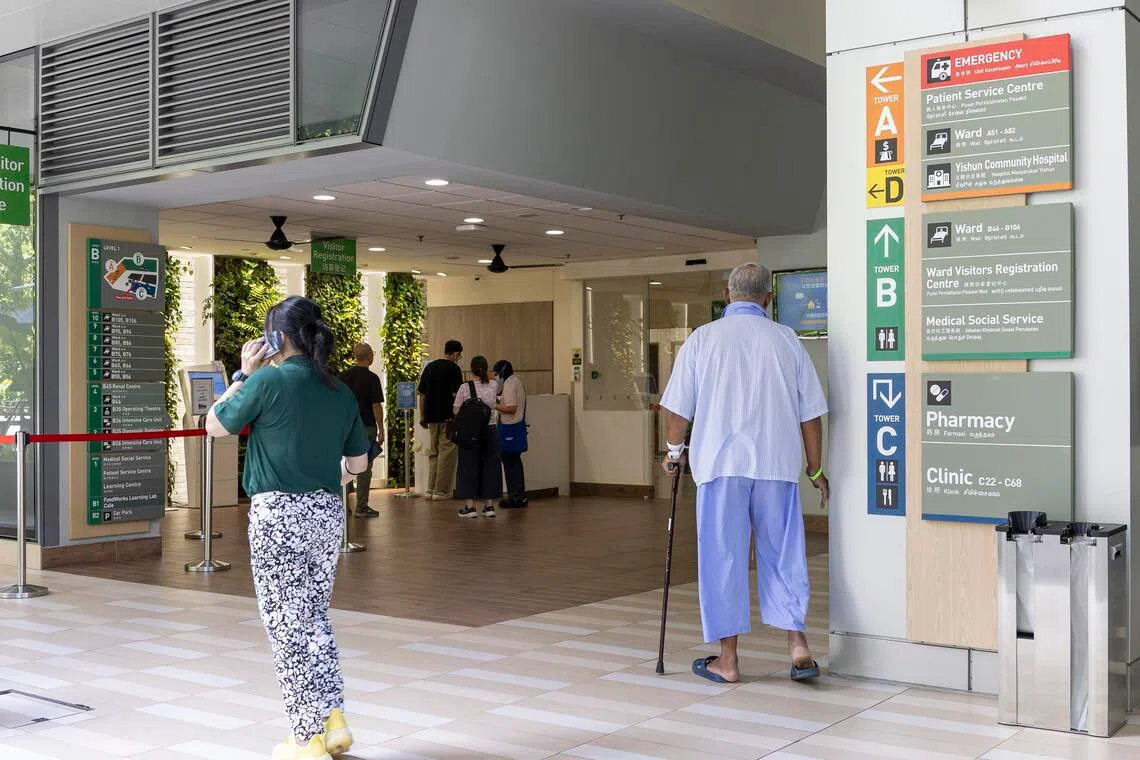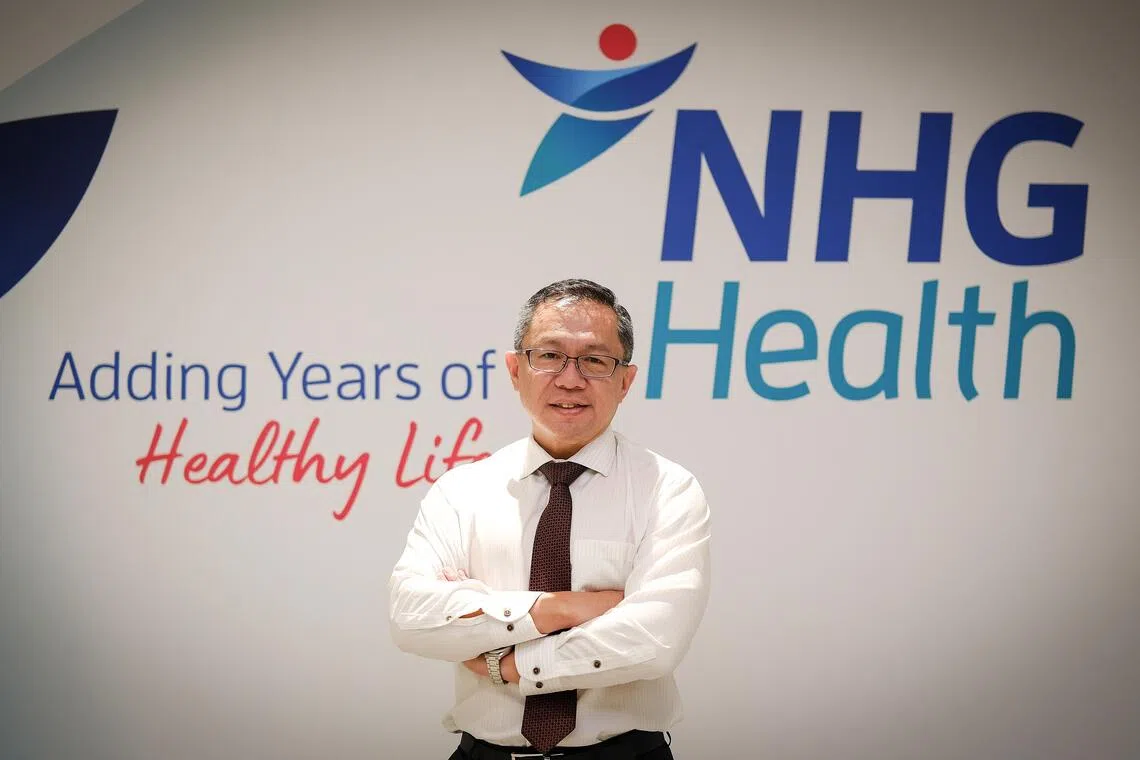Patients in the north see shorter wait times for beds, surgery: NHG Health chief
Sign up now: Get ST's newsletters delivered to your inbox

With the opening of Woodlands Health in May 2024, some 500 hospital beds have been added to Khoo Teck Puat Hospital’s close to 800 beds.
ST PHOTO: BRIAN TEO
Follow topic:
SINGAPORE – Not too long ago, Khoo Teck Puat Hospital (KTPH) had cared for patients on trolley beds lined in a three-by-three formation along the corridors of its emergency department.
Some patients had even been discharged from the trolley beds without being warded as it was bursting at the seams, being the only public hospital in the northern part of Singapore when it opened in 2010.
Its bed crunch situation has been resolved since the opening of Woodlands Health (WH) in May 2024
Some 500 hospital beds – and counting – have been added to KTPH’s close to 800 beds to provide more capacity for the growing residential population in the northern part of Singapore.
“It was very messy, but now it is better... no more trolley beds,” said NHG Health’s group chief executive, Professor Joe Sim.
Speaking to The Straits Times on Sept 25, his first formal interview as NHG Health’s chief, Prof Sim has made better workload coordination across hospitals one of his key priorities since joining the group in 2024.
NHG Health is one of three public healthcare clusters here. The cluster’s three acute hospitals – KTPH, WH and Tan Tock Seng Hospital (TTSH) – care for the needs of Singapore’s residential population in the central and northern regions.
The other two clusters – SingHealth and the National University Health System (NUHS) – take care of residents in the eastern and western parts of Singapore, respectively.
Since WH’s opening, the median waiting time in KTPH’s emergency department prior to ward admission has improved from an average of 6.9 hours in the first half of 2024 to an average of 2.4 hours in September. This is below the national average of 4.9 hours in 2024.
For the week of Sept 14 to 20, KTPH’s daily occupancy rate was between 73.3 per cent and 78.9 per cent, and WH’s was between 77.1 per cent and 86.5 per cent. Comparatively, the national average was 84.2 per cent.

Professor Joe Sim, group CEO of NHG Health, has made better workload coordination across hospitals one of his key priorities since joining the group in 2024.
PHOTO: LIANHE ZAOBAO
There are plans to further expand hospital bed capacity within NHG Health.
WH, for instance, will grow its 500 beds to around 900 by 2030, and could expand to up to 1,400 beds if needed.
Meanwhile, TTSH will add 600 more beds
Prof Sim recalled the stressful early days of balancing patient loads between KTPH and WH.
He had to station WH clinicians in KTPH to triage and convince patients to be transferred to WH.
This was because some patients had not heard of WH, while others did not want to travel to Woodlands for follow-up visits.
Prof Sim’s team even offered KTPH patients ambulance rides to WH.
Similarly, some TTSH patients had to be convinced to schedule their surgery in WH especially when the operating theatres in TTSH were almost full.
“To do this, we need a lot of trust and cooperation,” said Prof Sim, referring not just to patients’ trust in WH, but also to KTPH and TTSH doctors’ trust in WH’s crew.
“We hope that when patients see the same NHG Health logo, whether in primary care or a hospital, they know that we have the same protocols, same pathways and same standards across our institutions,” said Prof Sim.
As Singapore evolves its healthcare model to one of preventive care and move patient care outside of hospitals, NHG Health will also need to work well with a larger network of general practitioners and community partners.
For instance, NHG Health hopes to reach out to residents through the active ageing centres, as well as a soon-to-be-upgraded Community Health Post initiative, both of which are important nodes within the community for social engagement.
The different healthcare clusters also collaborate in many areas to step up patient care.
NHG Health’s Institute of Mental Health (IMH), for one, will be working with SingHealth’s Sengkang General Hospital to manage patients with mental health conditions. Very complex cases will still be transferred to IMH.
Additionally, NHG Health staff use the Note Buddy app developed by SingHealth to summarise clinical information from interactions with patients. The app is able to distinguish social chats from clinical information, and understand dialects and Mandarin.
“In our first 25 years, there was healthy competition... Looking ahead, that same spirit of drive and excellence will remain, with the three clusters increasingly working as one public healthcare system to serve Singaporeans better,” said Prof Sim.
Correction note: An earlier version of the story said that KTPH patients had to be convinced to schedule their surgery in WH as the operating theatres in KTPH were full. This has been corrected. We are sorry for the error.

